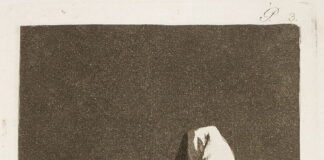
An Egyptian statue from the 3rd millennium BC fetched almost 10 million US dollars at Sotheby’s in London on 27 January 2022. However, the sale of the about 80 cm high limestone figure was illegal. At least according to the Egyptian government, who – prior to the auction – demanded Sotheby’s to withdraw the object from the sale and to return it to Egypt.
Such demands come up time and again, the reason is usually an unclear provenance. But this case is completely different and affects the antiquities trade in general. For the limestone statue with an estimate of 3 to 5 million dollars has a flawless provenance, which is why it sold for much more than the estimate.

A Legal Excavation, A Legal Export
In 1913, the American archaeologist George Andrew Reisner excavated tomb No. G 2415 in the Great Western cemetery near the Pyramid of Khufu in Giza. There he found, among other things, the controversial statue from the late 5th dynasty (ca. 2440-2355 BC). At the time, Reisner was working for a joint project by Harvard University and the Museum of Fine Arts in Boston; and – as was customary at the time – the excavators were allowed to export some of their finds with a (written!) permission of the Egyptian antiquities authority in 1921. The Museum of Fine Arts parted with the statue in 1978, it was first offered in a Sotheby’s auction in London in 1996 and was now again on offer. Such an undisputed provenance is every collector’s dream because it’s rarely possible to prove the exact history of a find. So, where is the catch?
Reinterpreting an Old Law
Abdel Rahim Rihan, the director-general of Archaeological Research, Studies and Scientific Publication in the South Sinai Region, explained in the newspaper “Egypt Today” why Egypt now considers the export to be illegal.
Rihan justifies this view with the Antiquities Protection Law, a 1983 act that lays out in Article 35 that Egypt is the owner of all found antiquities and that exporting them is illegal.
However, it was not until a 2010 reinterpretation of these stipulations that this law turned out to be a bombshell. For decades, the law had only regulated how new finds are to be handled. In 2010 momentous changes were made. The previous Article 9, which dealt with a possible private ownership of antiquities, was completely eliminated. And a preface signed by Zahi Hawass was put at the beginning of the law. In this text, Egypt’s then chief archaeologist emphasised the need to abolish the former custom of letting foreign excavators keep part of the find. In general, this is quite understandable – ensuring that a find is shared with the excavators is a concept in line with the mindset of the colonial era and certainly no longer appropriate.
However, with regard to the past, the former Minister of Antiquities Mamdouh al-Damaty pointed out as recently as in 2017 that most of Egypt’s cultural property was exported perfectly legally under the old law. He, too, did not consider the 1983 law to have retroactive effect.
Now, however, Egypt applies its Antiquities Protection Law retroactively, invalidating earlier agreements concluded by the State of Egypt. This interpretation violates the doctrine of legitimate expectation. A general rule among lawyers is: as long as you adhere to current laws, you must be able to rely on the fact that your actions are legal. And that’s what the US excavation group did at the time.
Retroactive changes of legal stipulations are major exceptions that are primarily made to serve the common good. Egypt’s political act of criminalising all previous exports retroactively would eventually mean that no collector, no museum outside Egypt can ever be able to (legally!) possess exported objects of Egyptian culture with legal certainty.

Can Egypt Be Trusted in the Future?
Should Egypt apply this understanding of the law across the board, the question arises as to how reliably foreign institutions can cooperate with the country. Will it be possible for Egypt to confiscate loans from other museums whenever they want? (How quickly this can happen was demonstrated in the cases of the Crimean gold and the Basel Hercules.)
What about the obelisk on the Place de la Concorde? Currently, this Parisian landmark, which is the oldest monument of the city, is being restored. In 1829 Muhammad Ali Pascha, the Governor of Egypt, had given the monument to the French King Louis-Philippe. Will Egypt claim this to be an illegal act and demand the object back, too?
Trade and interactions between humans and countries in general are based on trust. Annulling promises and agreements retroactively is the most effective means of undermining this trust.
Sotheby’s presented the Egyptian statue in detail in the auction catalogue.
Here you can read the article in “Egypt Today”.
You can find the text of the Antiquities Protection Law at the UNESCO website.
On another website you can still read the original text with the deleted article 9.
Here you can read the statements of Mamdouh al-Damaty and find out about their revealing context.



